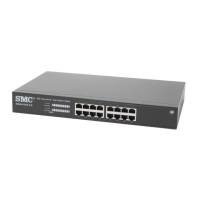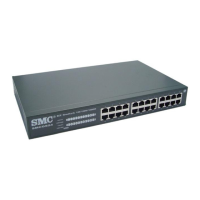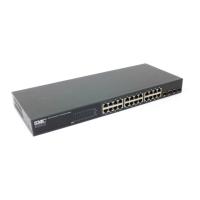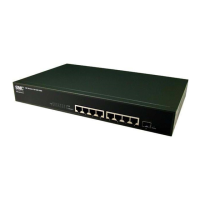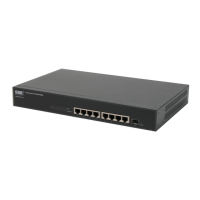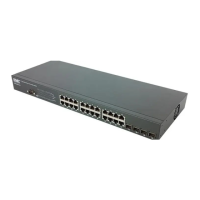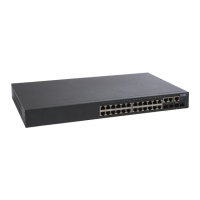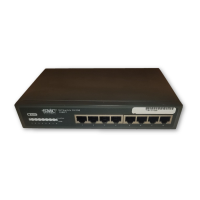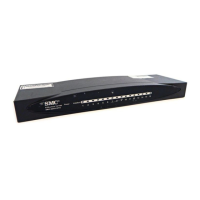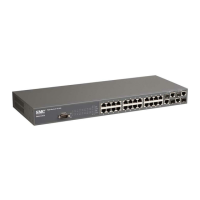C
HAPTER
4
| Configuring the Switch
Quality of Service
– 176 –
The switch also allows you to configure QoS classification criteria and
service policies. The switch’s resources can be prioritized to meet the
requirements of specific traffic types on a per hop basis. Each packet is
classified upon entry into the network based on Ethernet type, VLAN ID,
TCP/UDP port, DSCP, ToS, or its VLAN priority tag. Based on configured
network policies, different kinds of traffic can be marked for different kinds
of forwarding.
CONFIGURING PORT
CLASSIFICATION
Use the QoS Ingress Port Classification page to set the basic QoS
parameters for a port, including the default traffic class, DP level (IEEE
802.1p), user priority, drop eligible indicator, classification mode for tagged
frames, and DSCP-based QoS classification.
PATH
Configuration, QoS, Port Classification
PARAMETERS
These parameters are displayed:
QoS Ingress Port Classification
◆ Port – Port identifier.
◆ QoS class – Controls the default QoS class, i.e., the QoS class for
frames not classified in any other way. There is a one to one mapping
between QoS class, queue and priority. A QoS class of 0 (zero) has the
lowest priority. (Range: 0-7; Default: 0)
◆ DP level – Controls the default drop priority for frames not classified in
any other way. (Range: 0-1; Default: 0)
◆ PCP – Controls the default Priority Code Point (or User Priority) for
untagged frames. (Range: 0-7; Default: 0)
◆ DEI – Controls the default Drop Eligible Indicator for untagged frames.
(Range: 0-1; Default: 0)
◆ Tag Class. – Shows classification mode for tagged frames on this port:
■
Disabled – Uses the default QoS class and DP level for tagged
frames.
■
Enabled – Uses the mapped versions of PCP and DEI for tagged
frames.
Click on the mode in order to configure the mode and/or mapping.
◆ DSCP Based – Click to Enable DSCP Based QoS Ingress Port
Classification (see page 186).
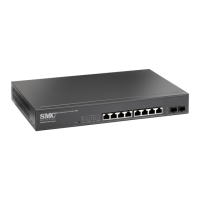
